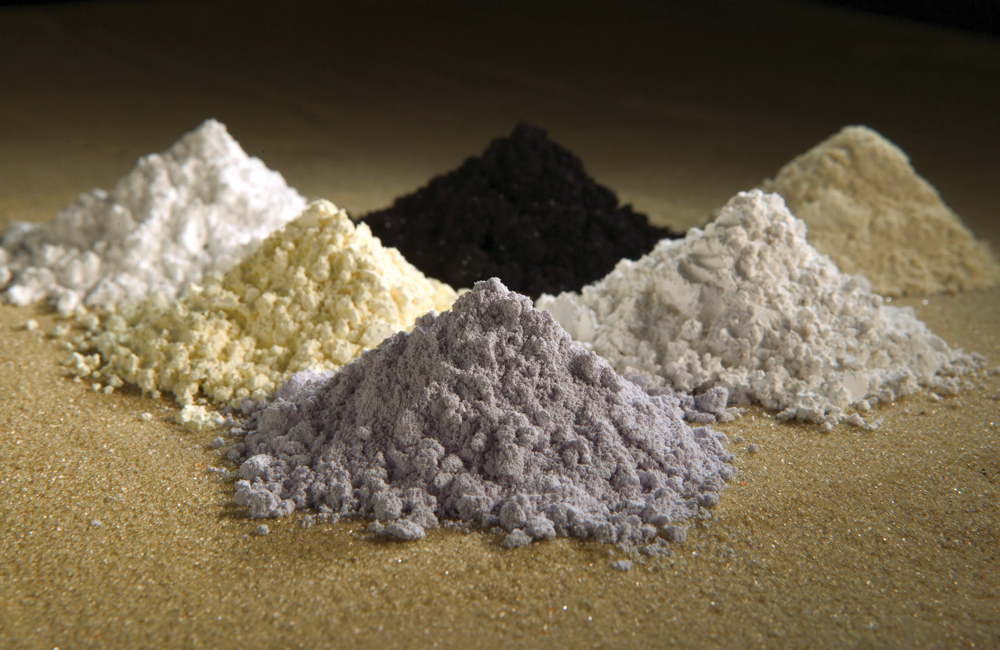Rare earth elements may be tedious to extract but their capabilities have become irreplaceable in modern technology and industrial processes.
A range of 17 light to heavy rare earth elements — encompassing scandium, yttrium (named for the Swedish village Ytterby where the first rare earths were identified in the 18th century) and 15 various lanthanides — are prime components across various defense, catalytic, ceramic, glass & polishing, magnetic, metal alloy and phosphorescent applications.
While not rare in theory, these elements are found interspersed in numerous minerals, coal and coal by-products rather than in their own heavily concentrated deposits. China is the current heavyweight with 44 million metric tons (MMT) of rare earth reserves identified, followed by Brazil (21 MMT), India (6.9 MMT), Australia (5.7 MMT), Russia (3.8 MMT), Vietnam (3.5 MMT), the U.S. (1.9 MMT) and Greenland (1.5 MMT).
A clear priority of the Trump Administration has been to sever U.S. dependence on foreign imports of rare earths, critical minerals and materials, especially from China. However, a vast difference in supply has placed the nation at the mercy of those imports. As of 2024, China satisfied 77% of the nation’s rare earth imports, according to the U.S. Geological Survey (USGS).
In August 2025, it was announced that the administration would consider up to $1 billion in new funding dedicated to ramping up development of U.S. critical minerals and materials essential to U.S. national security. Proposed funding from the U.S. Office of Manufacturing and Energy Supply Chains details upwards of $500 million to expand U.S. critical minerals and materials processing, battery manufacturing and recycling, in addition to $135 million to scale the nation’s rare earth elements supply chain through commercial activity.
Other funding specific to rare earths would come from the Advanced Materials and Manufacturing Technologies Office, which would provide a $50 million boost to its Critical Minerals and Materials Accelerator program. The accelerator nurtures innovative technology development, supporting access to capital investments and facilitating commercialization. A key area of focus with this funding would be processes relevant to the rare earth magnet supply chain.
“For too long, the United States has relied on foreign actors to supply and process the critical materials that are essential to modern life and our national security,” said U.S. Department of Energy Secretary Chris Wright. “Thanks to President Trump’s leadership, the Energy Department will play a leading role in reshoring the processing of critical materials and expanding our domestic supply of these indispensable resources.”
Prior to the late 1990s, the U.S. (thanks in large part to the Molycorp mine in California’s Mojave Desert) led in rare earth elements production, before an influx of environmental regulations and mine closures and an overall shift in industrial priorities left the nation behind as REE production in China climbed from some 8,500 metric tons in 1985 to 210,000 metric tons as recently as 2022.
Mining activity in Wyoming, however, has uncovered raw commercial opportunity.
The Element(s) of Surprise
Over two years ago, Ramaco Resources was in the midst of exploratory drilling at its 15,800-acre Brook Mine when the team discovered what was ultimately the tip of the iceberg of a now identified 1.7-million-ton Total Rare Earth Oxide deposit.
That estimate only reflects deposits found on an initial 4,500 permitted acres of the Sheridan, Wyoming, coal mine. Anticipate those numbers to rise following the official opening of the Brook Mine Carbon Ore Rare Earth project in July 2025 and the Wyoming Department of Environmental Quality’s second five-year land use approval. By securing these permits, Ramaco gains 4,549 additional acres cleared for further coal mining and reclamation operations.
Brook Mine represents the nation’s first and largest rare earth mine in over 70 years and the state’s first new coal mine in more than 50 years. For the U.S., this new production is vital to strengthening the domestic rare earths supply chain and future innovation.
Ramaco estimates 565 metric tons, or about 40% of future production, will introduce five rare earth elements including neodymium, praseodymium, dysprosium terbium and scandium, paired with two critical minerals, gallium and germanium. These particular rare earths are key to the aerospace & defense, automotive, electronics, energy and semiconductor industries. China currently holds over 65% of the current global shares of neodymium and praseodymium and 100% of scandium.
The company notes that future production will bring 837 metric tons of 11 additional rare earth elements.
“We are strongly encouraged by the progress that has been made on our emerging rare earth element and critical mineral front at the Brook Mine in Wyoming,” said Ramaco Resources CEO Randall Atkins in May 2025. “Last month, China banned the export of terbium, dysprosium and scandium to the United States. This comes on top of last year’s ban of gallium and germanium exports. Together, these five REEs and critical minerals are anticipated to make up the vast majority of both our future revenue and cash flow from the Brook Mine.”
A preliminary economic assessment released by Fluor Corporation estimates that high-value minerals like scandium, gallium and germanium could account for 82% of the Brook Mine’s revenue, scandium alone reflecting 58% of that total. Ramaco aims to leverage its coal and newfound rare earths portfolio to transition into a dual platform company. Fluor estimates that the capital cost for a rare earths processing facility would be $533.1 million, which would carry a pre-tax internal rate of return of 38% and a payback period of five years.
In an August earnings call, Atkins noted that the DOE will essentially become the company’s partner in providing resources needed for the exploration, processing, refinement and production of materials and metals from the mine. Aside from potential rare earth and critical mineral customer inquiries, Ramaco is also engaged with several federal agencies beyond the DOE — such as the Department of Defense, the Department of Interior and the National Security Agency — to advance critical mineral development.
“In sum, we are rapidly taking steps to develop our REEs into a commercial business,” Atkins said. “We are also being provided strong encouragement and support from the Trump administration in this regard. During the pilot phase, we expect to better define the size of the capital investment as we optimize the processing flow sheet and advance further.”

